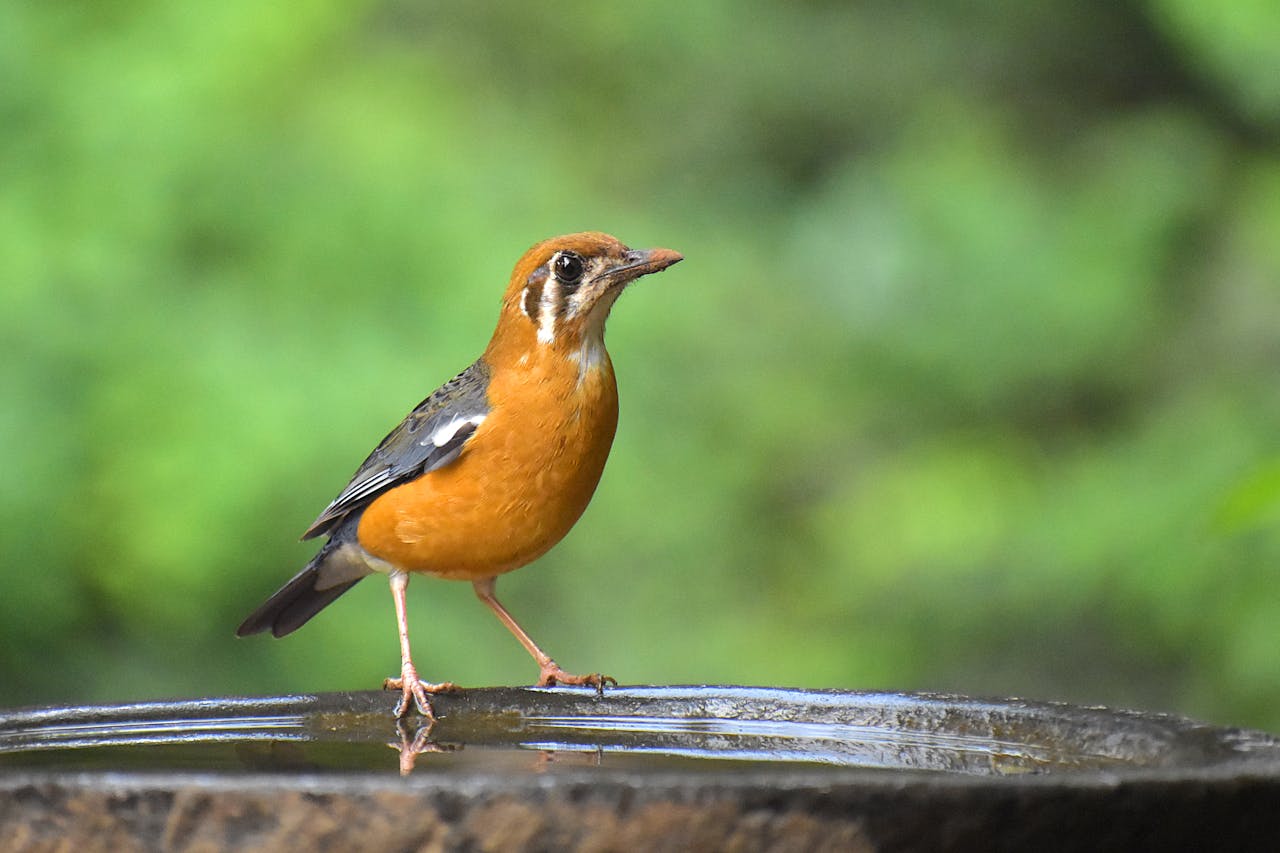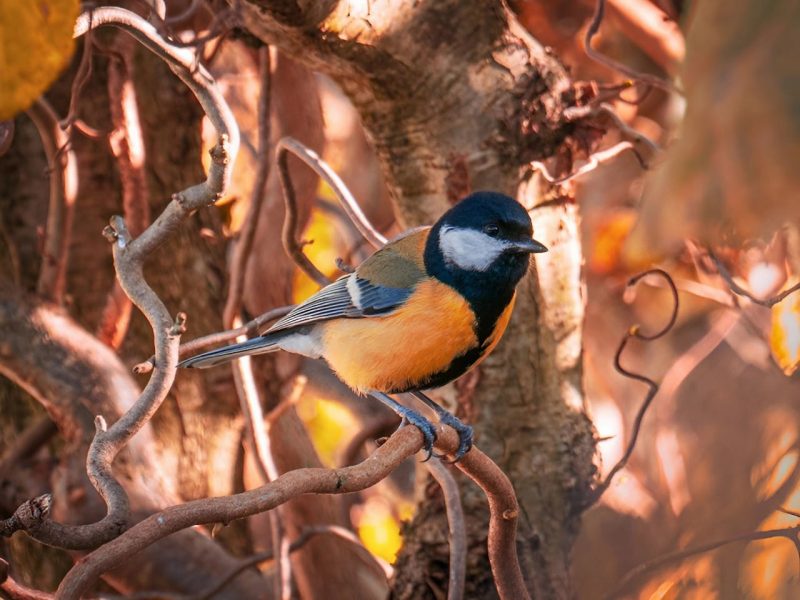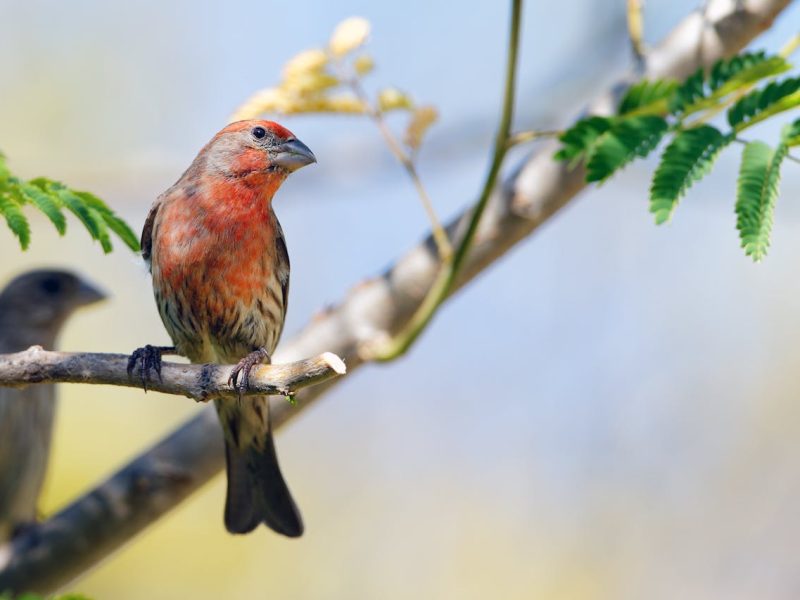Having birds visit your outdoor spaces brings joy and connection with nature. From cheerful songs to vibrant colors, birds can transform a simple terrace or garden into a lively environment.
Attracting feathered friends also offers practical benefits like natural pest control and pollination. But how do you make your space inviting for our winged companions? Let’s explore some effective yet straightforward methods.
Providing Food and Water Sources
One surefire way to attract birds is by offering them a reliable food and water supply. Think of it as setting up a cozy restaurant just for them!
Bird Feeders
Hanging a bird feeder is often the first step people take. Depending on the types of birds you want to attract, you can choose from various designs like tube feeders, hopper feeders, or suet feeders.
I’ve had great success with a simple tube feeder filled with a high-quality seed mix. The key is to keep it clean and well-stocked.
Bird Baths and Water Sources
Water is just as essential as food for our feathered friends. A basic bird bath can work wonders, whether it’s a pedestal style or a shallow dish at ground level. I like to position mine near shrubs or trees, so birds have a nearby perch and feel safer.
Keeping the water fresh and the bath clean is crucial. You can also get creative with misters or drippers if you want to add a touch of ambiance.
Fruit and Berries
Don’t underestimate the appeal of fresh fruits and berries! Plant fruiting trees, bushes, or vines like cherries, mulberries, or raspberries, and you’ll have a natural buffet for birds. I’ve witnessed countless birds feasting on the strawberries and blueberries in my garden – it’s like their own little farmer’s market.
Creating Shelter and Nesting Sites
In addition to food and water, birds need safe places to rest, nest, and raise their young. Your outdoor space can become a cozy sanctuary with a few simple additions.
Birdhouses
A well-placed birdhouse can be an open invitation for birds to move in and start a family. Different species prefer different styles, so do some research on the local birds in your area. I’ve had the most luck with basic wooden houses for species like wrens and chickadees. Just be sure to clean them out annually and mount them securely.
Brush Piles and Roosting Pockets
Don’t be too quick to tidy up that pile of pruned branches or twigs – it could become a perfect hideaway for birds! Similarly, leaving small pockets or cavities within dense shrubs or trees can give birds cozy roosting spots.
Dense Plantings and Thickets
Speaking of dense shrubs, allowing certain areas of your garden to grow a bit wild can create ideal nesting sites. Birds feel safer in thick, tangled growth where they can tuck away their nests. It’s like giving them their private suite in your outdoor retreat.
Choosing Bird-Friendly Plants
The plants you choose for your terrace or garden can make a big difference in attracting feathered visitors.
Let’s break it down by category:
Native Plants
Local birds have evolved alongside native plants, so incorporating these into your landscape is a smart move. Native plants provide familiar food sources and shelter that birds recognize and prefer. Do some research on the best native options for your region – your local birds will thank you!
Plants for Food Sources
Seed-producing plants like sunflowers, coneflowers, and millets are like an all-you-can-eat buffet for seed-eating birds. Berry bushes and fruit trees serve up a delicious treat for fruit lovers. And don’t forget plants that attract insects – those protein-rich bugs are a crucial food source for many bird species.
Plants for Shelter and Nesting
Dense, thorny shrubs like barberry or pyracantha make excellent nesting sites and shelters for birds. Evergreen trees and bushes provide year-round protection from the elements, too. By offering a variety of plant structures, you create a comfortable habitat for different bird species.
Eliminating Hazards and Deterrents
While creating an inviting environment is important, it’s equally crucial to remove potential hazards and deterrents that could harm or scare away birds.
Reducing Window Strikes
One of the biggest dangers for birds is colliding with windows. Using decals, stickers, or other window treatments can help birds perceive the glass and avoid deadly strikes. I’ve found that strategically placing feeders and baths away from windows also minimizes this risk.
Keeping Cats and Other Predators Away
Outdoor cats, unfortunately, pose a significant threat to birds. If you have a feline friend, it’s best to keep them indoors or create a secure outdoor enclosure. Other predators like hawks or snakes should be deterred through habitat modification or exclusion methods.
Avoiding Pesticides and Chemicals
Pesticides and chemical fertilizers can be toxic to birds, either directly or by contaminating their food sources. Opting for organic, natural alternatives is a much safer choice for your feathered visitors and the broader ecosystem.
Providing Essential Elements
Birds need three basic elements to thrive: water, food, and shelter. By intentionally incorporating these essentials into your outdoor space, you’ll be well on your way to creating an avian paradise.
Water
We’ve already discussed the importance of fresh, clean water sources like bird baths or misters. Ensure these are well-maintained and readily available, especially during hot or dry periods.
Food
Offering a diverse array of food sources throughout the year is key. Plant a variety of seed, fruit, and berry-producing plants to provide a continuous supply. And don’t forget those trusty bird feeders stocked with high-quality seed mixes.
Cover and Shelter
Dense plantings, thickets, brush piles, birdhouses, and roosting pockets all contribute to a sense of security and safety for birds. By creating these sheltered areas, you’ll give them the confidence to make your outdoor space their home.
Additional Tips and Considerations
As you embark on your journey to attract birds, here are a few extra tips and considerations to keep in mind:
- Create a detailed plan or design for your bird-friendly space, considering the essential elements, plant choices, and potential hazards.
- Observe and learn about the specific bird species in your area, so you can cater to their preferences.
- Join local bird-watching groups or clubs to connect with fellow enthusiasts and gain valuable insights.
- Continue researching and learning – there’s always more to discover about the fascinating world of backyard birds!
Conclusion
Attracting birds to your terrace or garden is a rewarding endeavor that benefits both you and our feathered friends. By providing food, water, shelter, and safe spaces, you can create a welcoming oasis that encourages birds to visit and potentially make your outdoor space their home.
It may take some patience and effort to get started, but the joy of seeing and hearing birds flourish in your personal nature sanctuary is truly priceless.



